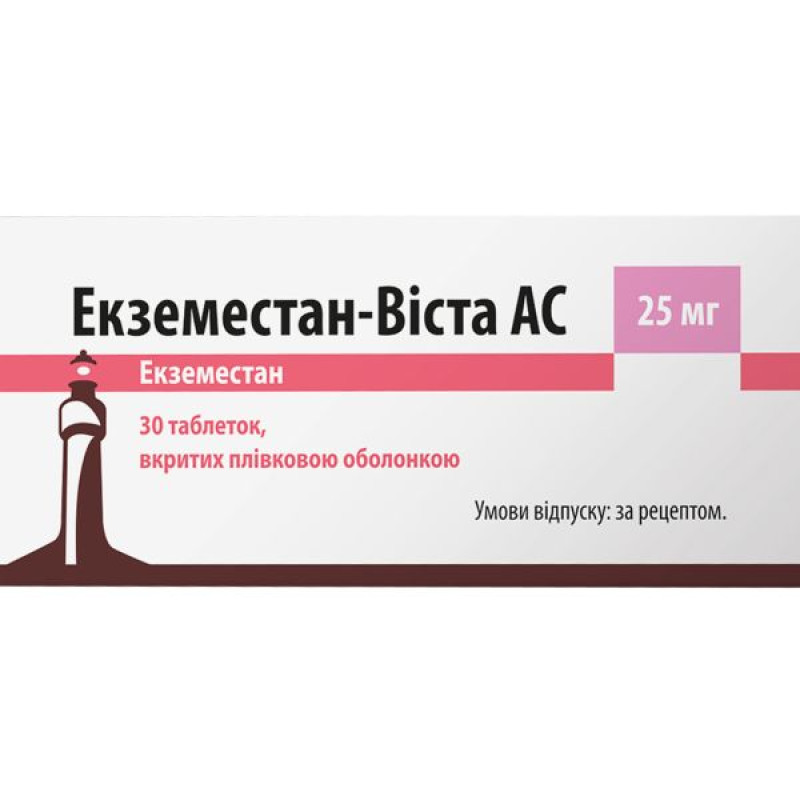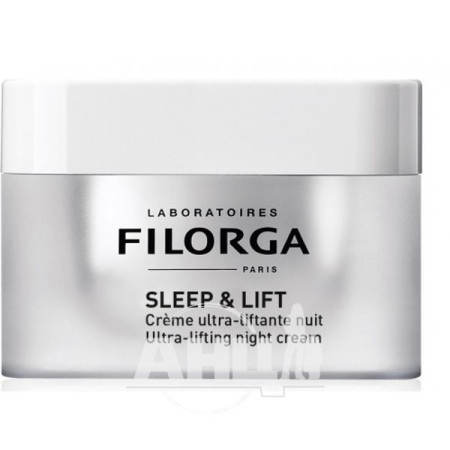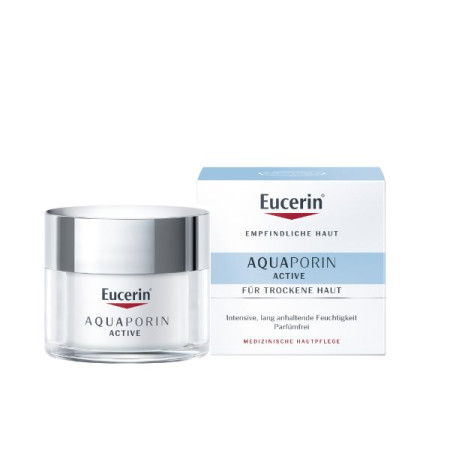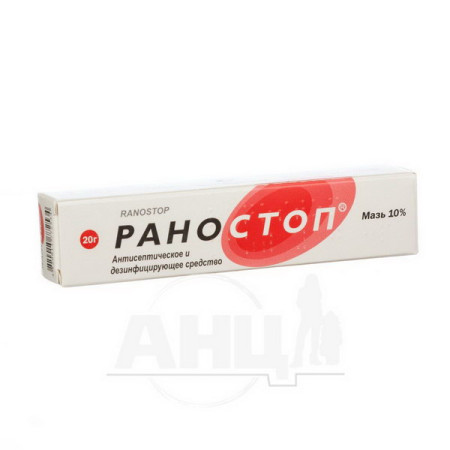Exemestane-Vista AC film-coated tablets 25 mg No. 30

Instructions for Exemestane-Vista AC film-coated tablets 25 mg No. 30
Composition
active ingredient: exemestane;
1 tablet contains exemestane 25 mg;
excipients: povidone K30, sodium starch glycolate (type A), microcrystalline cellulose, talc, colloidal anhydrous silica, magnesium stearate, polysorbate 80, corn starch, pregelatinized starch, Opadry II 85F18422 white (polyvinyl alcohol, titanium dioxide (E 171), macrogol 3350, talc).
Dosage form
Film-coated tablets.
Main physicochemical properties: white round film-coated tablets with a uniform surface and unbroken edges.
Pharmacotherapeutic group
Hormone antagonists and similar agents. Enzyme inhibitors. ATX code L02B G06.
Pharmacological properties
Pharmacodynamics
Mechanism of action.
Exemestane is an irreversible steroidal aromatase inhibitor, structurally similar to the natural substance androstenedione. In postmenopausal women, estrogens are produced primarily by the conversion of androgens to estrogens by the aromatase enzyme in peripheral tissues. Blocking estrogen production by inhibiting aromatase is an effective and selective treatment for hormone-dependent breast cancer in postmenopausal women. In postmenopausal women, exemestane significantly reduced serum estrogen concentrations starting at a dose of 5 mg; the maximum reduction (> 90%) was achieved at a dose of 10–25 mg. In postmenopausal patients with breast cancer who received 25 mg of exemestane daily, total aromatase levels were reduced by 98%.
Exemestane has no progestogenic or estrogenic activity. A small androgenic activity, presumably related to the 17-hydroderivative, was observed mainly at high doses of exemestane. In studies of long-term daily administration, exemestane did not affect the biosynthesis of hormones such as cortisol or aldosterone in the adrenal glands, the levels of which were measured before or after the ACTH (adrenocorticotropic hormone) test; this demonstrated selectivity over other enzymes involved in steroid metabolism.
In this regard, there is no need for replacement therapy with glucocorticoids and mineralocorticoids.
A slight, dose-independent increase in serum luteinizing and follicle-stimulating hormones is observed even at low doses; this effect is, however, expected for drugs of this pharmacological group; it probably develops by a feedback mechanism at the pituitary level, as a result of a decrease in estrogen concentration, which stimulates the secretion of gonadotropins by the pituitary gland (also in postmenopausal women).
Clinical efficacy and safety.
Adjuvant therapy for early-stage breast cancer.
In a multicenter, randomized, double-blind study (IES – Intergroup Exemestane Study) conducted in 4724 postmenopausal women with estrogen receptor-positive or estrogen receptor-undetermined primary breast cancer, patients who were free of recurrence after 2–3 years of adjuvant tamoxifen therapy were randomized to receive exemestane (25 mg/day) or tamoxifen (20 or 30 mg/day) for 3–2 years to complete a 5-year course of hormonal therapy.
Follow-up with a median of 52 months in the Intergroup Exemestane Study.
Results from a study with a median treatment duration of approximately 30 months and a median follow-up of approximately 52 months demonstrated that continued treatment with exemestane after 2–3 years of adjuvant tamoxifen therapy was associated with a clinically and statistically significant improvement in disease-free survival (DFS) compared with continued tamoxifen therapy. Results showed that during the study period, exemestane reduced the risk of breast cancer recurrence by 24% compared with tamoxifen (hazard ratio 0.76; p = 0.00015). The greater benefit of exemestane compared with tamoxifen in terms of disease-free survival was evident regardless of lymph node status or prior chemotherapy.
In the overall study population, a trend towards improved overall survival was observed with exemestane (222 deaths) compared with tamoxifen (262 deaths) with a hazard ratio of 0.85 (log rank test: p = 0.07362), representing a 15% reduction in the risk of death in favour of exemestane. A statistically significant 23% reduction in the risk of death (hazard ratio for overall survival 0.77; chi-square test (Wald test): p = 0.0069) was observed with exemestane compared with tamoxifen when adjusting for prespecified prognostic factors (i.e. estrogen receptor status, lymph node status, prior chemotherapy, use of hormone replacement therapy and bisphosphonates).
Key efficacy outcomes in all patients (patient population stratified by treatment assignment) and in patients with estrogen receptor-positive cancer at 52 months
End point Population | Exemestane Phenomena/N (%) | Tamoxifen Phenomena/N (%) | Hazard ratio (95% CI) | p-value* |
| Disease-free survival a | ||||
| All patients | 354/2352 (15.1%) | 453/2372 (19.1%) | 0.76 (0.67–0.88) | 0.00015 |
| ER+ patients | 289/2023 (14.3%) | 370/2021 (18.3%) | 0.75 (0.65–0.88) | 0.00030 |
| Contralateral breast cancer | ||||
| All patients | 20/2352 (0.9%) | 35/2372 (1.5%) | 0.57 (0.33–0.99) | 0.04158 |
| ER+ patients | 18/2023 (0.9%) | 33/2021 (1.6%) | 0.54 (0.30–0.95) | 0.03048 |
| Breast cancer-free survival b | ||||
| All patients | 289/2352 (12.3%) | 373/2372 (15.7%) | 0.76 (0.65–0.89) | 0.00041 |
| ER+ patients | 232/2023 (11.5%) | 305/2021 (15.1%) | 0.73 (0.62–0.87) | 0.00038 |
| Systemic recurrence-free survival in | ||||
| All patients | 248/2352 (10.5%) | 297/2372 (12.5%) | 0.83 (0.70–0.98) | 0.02621 |
| ER+ patients | 194/2023 (9.6%) | 242/2021 (12.0%) | 0.78 (0.65–0.95) | 0.01123 |
| Overall survivalg | ||||
| All patients | 222/2352 (9.4%) | 262/2372 (11.0%) | 0.85 (0.71–1.02) | 0.07362 |
| ER+ patients | 178/2023 (8.8%) | 211/2021 (10.4%) | 0.84 (0.68–1.02) | 0.07569 |
* Log rank test; ER+ patients = patients with positive estrogen receptor test.
a Disease-free survival is defined as the first occurrence of local or systemic recurrence, contralateral breast cancer, or death from any cause.
b Breast cancer-free survival is defined as the first occurrence of local or systemic recurrence, contralateral breast cancer, or breast cancer death.
c Systemic recurrence-free survival is defined as the first occurrence of systemic recurrence or death from breast cancer.
d Overall survival is defined as the occurrence of death from any cause.
In an additional subgroup analysis of patients with positive or indeterminate estrogen receptor status, the unadjusted hazard ratio for overall survival was 0.83 (log rank test: p = 0.04250), representing a clinically and statistically significant 17% reduction in the risk of death.
Results from a bone health study within the Exemestane Intergroup Study showed that women who used exemestane after 2–3 years of tamoxifen treatment had a modest decrease in bone mineral density. In the overall study, the incidence of post-treatment fractures, assessed over a 30-month treatment period, was higher in patients taking exemestane compared with tamoxifen (4.5% vs. 3.3%, respectively, p=0.038).
Results from an additional endometrial study within the Exemestane Intergroup Study showed that after 2 years of treatment, there was a median reduction in endometrial thickness of 33% in patients treated with exemestane compared with no significant change in patients treated with tamoxifen. Endometrial thickening observed at baseline with exemestane returned to normal (
Median follow-up of 87 months in the Exemestane Intergroup Study.
Overall, the greater benefit of exemestane compared with tamoxifen in terms of disease-free survival was evident regardless of lymph node status or prior chemotherapy or hormonal therapy. Statistical significance was not found in several subgroups with small sample sizes. These showed a trend in favor of exemestane in patients with more than 9 positive nodes or prior CMF chemotherapy (cyclophosphamide + methotrexate + 5-fluorouracil). There was a non-significant trend in favor of tamoxifen in patients with unknown nodal status, other prior chemotherapy, and unknown/unknown prior hormonal therapy.
In addition, exemestane also significantly prolonged breast cancer-free survival (hazard ratio 0.82; p = 0.00263) and systemic recurrence-free survival (hazard ratio 0.85; p = 0.02425).
Exemestane also reduced the risk of contralateral breast cancer, although the effect was no longer statistically significant during this follow-up period of the study (hazard ratio 0.74; p = 0.12983). In the overall study population, a trend towards improved overall survival was observed with exemestane (373 deaths) compared with tamoxifen (420 deaths), with a hazard ratio of 0.89 (log rank test: p = 0.08972), representing an 11% reduction in the risk of death in favor of exemestane. When adjusting for prespecified prognostic factors (i.e. estrogen receptor assay, lymph node status, prior chemotherapy, use of hormone replacement therapy, and bisphosphonates), a statistically significant 18% reduction in the risk of death (hazard ratio for overall survival 0.82; chi-square test (Wald test): p = 0.0082) was observed with exemestane compared with tamoxifen in the overall study population.
In an additional subgroup analysis of patients with positive or indeterminate estrogen receptor testing, the unadjusted hazard ratio for overall survival was 0.86 (log rank test: p = 0.04262), representing a clinically and statistically significant 14% reduction in the risk of death.
Results from an additional bone study showed that exemestane for 2–3 years after tamoxifen for 3–2 years resulted in increased bone loss during this treatment (mean % change from baseline in bone mineral density (BMD) at 36 months: -3.37 (spine), -2.96 (total hip) with exemestane and -1.29 (spine), -2.02 (total hip) with tamoxifen). However, at the end of the 24-month post-treatment period, the change in BMD from baseline in both treatment groups was minimal, with the final decrease in BMD in the tamoxifen group being slightly greater for all sites (mean % change in BMD from baseline at 24 months: -2.17 (spine), -3.06 (total hip) with exemestane and -3.44 (spine), -4.15 (total hip) with tamoxifen).
The number of all fractures reported during the treatment and follow-up periods was significantly higher in the exemestane group compared with the tamoxifen group (169 (7.3%) vs. 122 (5.2%); p = 0.004), but there was no difference in the number of fractures reported as a result of osteoporosis.
Treatment of advanced breast cancer.
A randomized, comparative, controlled clinical trial of exemestane at a daily dose of 25 mg demonstrated a statistically significant increase in survival, time to disease progression, and time to failure compared with standard hormonal treatment with megestrol acetate in postmenopausal women with advanced breast cancer that progressed after or during tamoxifen treatment as adjuvant therapy or as first-line therapy for advanced cancer.
Pharmacokinetics
Absorption
After oral administration, exemestane is rapidly absorbed. The dose absorbed from the gastrointestinal tract is high. Absolute bioavailability has not been established, although distribution should be limited by the first-pass effect. With a single dose of 25 mg after a meal, the average plasma level reaches a maximum after 2 hours and is 17 ng/ml. The pharmacokinetics of exemestane are linear and independent of time, with no accumulation observed with prolonged use. The terminal half-life of the drug is approximately 24 hours. It has been established that food improves absorption: the plasma level is 40% higher than in patients who took the drug on an empty stomach.
Distribution.
Metabolism and excretion
Exemestane is metabolized by oxidation of the methylene group (6) with the participation of the CYP 3A4 isoenzyme and/or by reduction of the 17-keto group with the participation of aldoketoreductase and subsequent conjugation. The clearance of exemestane is 500 l/h. With respect to aromatase inhibition, these metabolites are either inactive or less active than the parent compound. After oral administration of a single dose of 14C-labeled exemestane, it was found that the elimination of the drug and its metabolites was essentially complete within a week, with equal parts of the dose being excreted in the urine and feces (40%). 0.1 - 1% of the radioactive dose was excreted in the urine in the form of unchanged radiolabeled exemestane.
Special groups
Age: No significant correlation was observed between systemic exposure to exemestane and age.
Renal impairment: In patients with impaired renal function (CLcr
Given the safety profile of exemestane, dose adjustment is not necessary.
Liver dysfunction.
In patients with moderate or severe hepatic impairment, systemic exposure to exemestane is 2-3 times higher than in healthy volunteers. Given the safety profile of exemestane, no dose adjustment is necessary.
Indication
Adjuvant therapy in postmenopausal women with estrogen receptor-positive early invasive breast cancer after 2–3 years of initial adjuvant tamoxifen therapy.
Treatment of advanced breast cancer in women with natural or induced postmenopausal status who have shown disease progression after antiestrogen therapy. Efficacy has not been demonstrated in estrogen receptor negative patients.
Contraindication
Hypersensitivity to the active substance or to any of the excipients of the medicinal product.
The drug is also contraindicated in premenopausal women, women during pregnancy or breastfeeding.
Interaction with other medicinal products and other types of interactions
In vitro studies have shown that this exemestane is metabolized by cytochrome P450 (CYP3A4) and aldoketoreductases (see section 5.2) and does not inhibit any of the major CYP isoenzymes. A clinical pharmacokinetic study showed that specific inhibition of CYP3A4 by ketoconazole had no significant effect on the pharmacokinetics of exemestane.
In an interaction study with rifampicin, a potent CYP450 inducer, at a daily dose of 600 mg and a single dose of exemestane 25 mg, the AUC of exemestane decreased by 54% and Cmax by 41%. Since the clinical significance of this interaction has not been studied, concomitant use of medicinal products such as rifampicin, anticonvulsants (e.g. phenytoin and carbamazepine) and herbal preparations containing St. John's wort, which are known to induce CYP3A4, may reduce the efficacy of Exemestane-Vista.
Exemestane-Vista should be used with caution with drugs that are metabolized by CYP3A4 and have a narrow therapeutic window. There is no clinical experience with the simultaneous use of exemestane with other anticancer drugs.
Exemestane-Vista should not be used with estrogen-containing drugs, since their pharmacological effect is neutralized when used simultaneously.
Application features
Exemestane-Vista should not be administered to women with premenopausal endocrine status. Therefore, in appropriate clinical cases, postmenopausal status should be established by assessing LH, FSH and estradiol levels.
Exemestane-Vista should be administered with caution to patients with impaired liver or kidney function.
Exemestane-Vista is a potent estrogen-lowering agent; decreased bone mineral density and increased fracture rates have been observed with exemestane (see section 5.1). At the start of adjuvant therapy with Exemestane-Vista in women with or at risk of osteoporosis, baseline bone mineral density should be assessed based on current clinical guidelines and practices. Bone mineral density in patients with advanced disease should be assessed on an individual basis.
Although there is insufficient data on the effect of therapy in the treatment of bone mineral density loss caused by exemestane, it is necessary to monitor the condition of patients using Exemestane-Vista and initiate treatment or prevention of osteoporosis in patients at risk.
Routine assessment of 25-hydroxyvitamin D levels should be performed before initiating aromatase inhibitor therapy, as severe vitamin D deficiency is common in women with early breast cancer. Women with vitamin D deficiency should receive supplemental vitamin D.
Use during pregnancy or breastfeeding
Based on the results of animal studies and the mechanism of action, exemestane may cause embryotoxicity when administered during pregnancy. In animal studies, administration of exemestane to pregnant rats and rabbits caused an increased incidence of abortions and embryo-fetal toxicity. Pregnant women who are prescribed exemestane should be informed of the potential risk to the fetus. Women of childbearing potential should be advised to use effective contraception during treatment with Exemestane-Vista and for 1 month after discontinuation of the drug.
Breastfeeding. It is not known whether exemestane passes into breast milk. Exemestane-Vista should not be used by women who are breastfeeding.
Women in perimenopausal or reproductive age.
The physician should discuss the need for appropriate contraception for women of childbearing potential, as well as for women who are perimenopausal or recently postmenopausal, until their postmenopausal status is fully established (see sections “Contraindications” and “Special Precautions”).
Ability to influence reaction speed when driving vehicles or other mechanisms
Drowsiness, somnolence, asthenia and dizziness have been reported with exemestane. Patients should be advised that if these symptoms occur, their physical and/or mental reactions required for driving or operating machinery may be impaired.
Method of administration and doses
Adult and elderly patients
The recommended dose of Exemestane-Vista is 1 tablet of 25 mg daily after meals.
In patients with early-stage breast cancer, treatment with Exemestane-Vista should continue until completion of five years of combined sequential adjuvant hormonal therapy (tamoxifen, then Exemestane-Vista) or until tumor recurrence occurs.
In patients with advanced breast cancer, treatment with Exemestane-Vista should continue as long as tumor progression is evident.
No dose adjustment is required for patients with hepatic or renal insufficiency.
Children. Exemestane-Vista is not recommended for use in children.
Overdose
Clinical trial data on the use of exemestane in single doses of up to 800 mg in healthy female volunteers and up to 600 mg in postmenopausal women with malignant breast cancer indicate that these doses are well tolerated. A single dose of exemestane that can cause life-threatening symptoms has not been established. In animal studies, lethality was observed after administration of single doses equivalent to 2000 and 4000 of the recommended human dose in mg/m2. There is no specific antidote for overdose; symptomatic treatment should be carried out. General supportive measures are indicated, including constant monitoring of vital signs and careful observation of the patient.
Adverse reactions
Exemestane was generally well tolerated in all clinical trials at the standard dose of 25 mg/day; adverse events were generally mild to moderate in severity.
The rate of discontinuation due to adverse events was 7.4% in patients with early breast cancer receiving adjuvant exemestane therapy after initial adjuvant tamoxifen therapy. The most commonly reported adverse events were hot flashes (22%), arthralgia (18%), and fatigue (16%).
The incidence of discontinuation due to adverse events was 2.8% in the overall population of patients with advanced breast cancer. The most commonly reported adverse events were hot flashes (14%) and nausea (12%).
Most adverse events can be explained by the normal pharmacological effects of estrogen blockade (e.g. hot flashes).
Adverse reactions reported during clinical trials and post-marketing experience with exemestane are listed below by system organ class and frequency.
Frequency is defined as follows: very common (≥ 1/10), common (≥ 1/100 to
From the blood and lymphatic system: very often - leukopenia**;
often – thrombocytopenia**;
frequency unknown – decreased lymphocyte count**.
On the part of the immune system:
uncommon – hypersensitivity.
Metabolic and nutritional disorders:
often – anorexia.
From the psyche:
very often – depression, insomnia.
From the nervous system:
very often - headache, dizziness;
Common: carpal tunnel syndrome, paresthesia; rare: somnolence.
From the vascular side:
very often - tides.
From the gastrointestinal tract:
very often - abdominal pain, nausea;
often - vomiting, diarrhea, constipation, dyspepsia.
From the hepatobiliary system:
very common – increased levels of liver enzymes, increased levels of bilirubin in the blood, increased levels of alkaline phosphatase in the blood;
Rare: hepatitis†, cholestatic hepatitis†.
Skin and subcutaneous tissue disorders:
very often - increased sweating;
common: alopecia, rash, urticaria, pruritus; rare: acute generalized exanthematous pustulosis†.
very common – joint pain and musculoskeletal pain*;
often – fracture, osteoporosis.
General disorders and administration site conditions: very common - pain, fatigue; common - peripheral edema, asthenia.
* Includes arthralgia and less commonly pain in extremity, osteoarthritis, back pain, arthritis, myalgia and joint stiffness.
** In patients with advanced breast cancer, thrombocytopenia and leukopenia have been reported rarely. Intermittent decreases in lymphocyte counts have been observed in approximately 20% of patients treated with exemestane, particularly in patients with pre-existing lymphopenia. However, mean lymphocyte counts in these patients did not change significantly over time and there was no corresponding increase in the incidence of viral infections. These effects were not observed in patients treated in early breast cancer trials.
† Frequency calculated using the 3/X rule.
The table below shows the frequency of pre-specified adverse reactions and diseases in the Intergroup Study of Exemestane in Patients with Early Breast Cancer, regardless of causality, reported in patients receiving exemestane therapy and up to 30 days after its completion.
| Adverse reactions and diseases | Exemestane (N = 2249) | Tamoxifen (N = 2279) |
| Tides | 491 (21.8%) | 457 (20.1%) |
| Increased fatigue | 367 (16.3%) | 344 (15.1%) |
| Headache | 305 (13.6%) | 255 (11.2%) |
| Insomnia | 290 (12.9%) | 204 (9.0%) |
| Increased sweating | 270 (12.0%) | 242 (10.6%) |
| Gynecological diseases | 235 (10.5%) | 340 (14.9%) |
| Dizziness | 224 (10.0%) | 200 (8.8%) |
| Nausea | 200 (8.9%) | 208 (9.1%) |
| Osteoporosis | 116 (5.2%) | 66 (2.9%) |
| Vaginal bleeding | 90 (4.0%) | 121 (5.3%) |
| Other primary cancer | 84 (3.6%) | 125 (5.3%) |
| Vomiting | 50 (2.2%) | 54 (2.4%) |
| Vision impairment | 45 (2.0%) | 53 (2.3%) |
| Thromboembolism | 16 (0.7%) | 42 (1.8%) |
| Osteoporotic fracture | 14 (0.6%) | 12 (0.5%) |
| Myocardial infarction | 13 (0.6%) | 4 (0.2%) |
In the Intergroup Exemestane Study, the incidence of myocardial ischemia events in the exemestane and tamoxifen treatment groups was 4.5% and 4.2%, respectively. No significant differences were observed for any individual cardiovascular events, including hypertension (9.9% vs. 8.4%), myocardial infarction (0.6% vs. 0.2%), and heart failure (1.1% vs. 0.7%).
In the Intergroup Exemestane Study, exemestane was associated with a higher incidence of hypercholesterolemia compared with tamoxifen (3.7% vs. 2.1%).
In a separate double-blind, randomized trial in postmenopausal women with low-risk early breast cancer treated with exemestane (N = 73) or placebo (N = 73) for 24 months, exemestane was associated with a mean decrease in plasma HDL-cholesterol of 7–9% compared with a 1% increase in the placebo group. There was also a 5–6% decrease in apolipoprotein A1 in the exemestane group compared with a 0–2% decrease in the placebo group. The effects on all other lipid parameters analyzed (total cholesterol, LDL-cholesterol, triglycerides, apolipoprotein-B, and lipoprotein-a levels) were similar in the two treatment groups. The clinical significance of these findings is unknown.
In the Intergroup Study of Exemestane, gastric ulcers were observed at a higher frequency in the exemestane group compared to the tamoxifen group (0.7% vs.
Reporting of suspected adverse reactions. Reporting of suspected adverse reactions after the registration of a medicinal product is important. This allows for continuous monitoring of the balance between benefits and risks associated with the use of this medicinal product. Healthcare professionals should report any suspected adverse reactions in accordance with legal requirements.
Expiration date
2 years.
Storage conditions
Store in the original packaging at a temperature not exceeding 25 ºС.
Keep out of reach of children.
Packaging
10 tablets in a blister, 3 or 10 blisters in a cardboard box.
Vacation category
According to the recipe.
Producer
Sindan Pharma S. R. L.
Address
11 Iona Mihalache Blvd., Sector 1, 011171, Bucharest, Romania.
There are no reviews for this product.
There are no reviews for this product, be the first to leave your review.
No questions about this product, be the first and ask your question.













